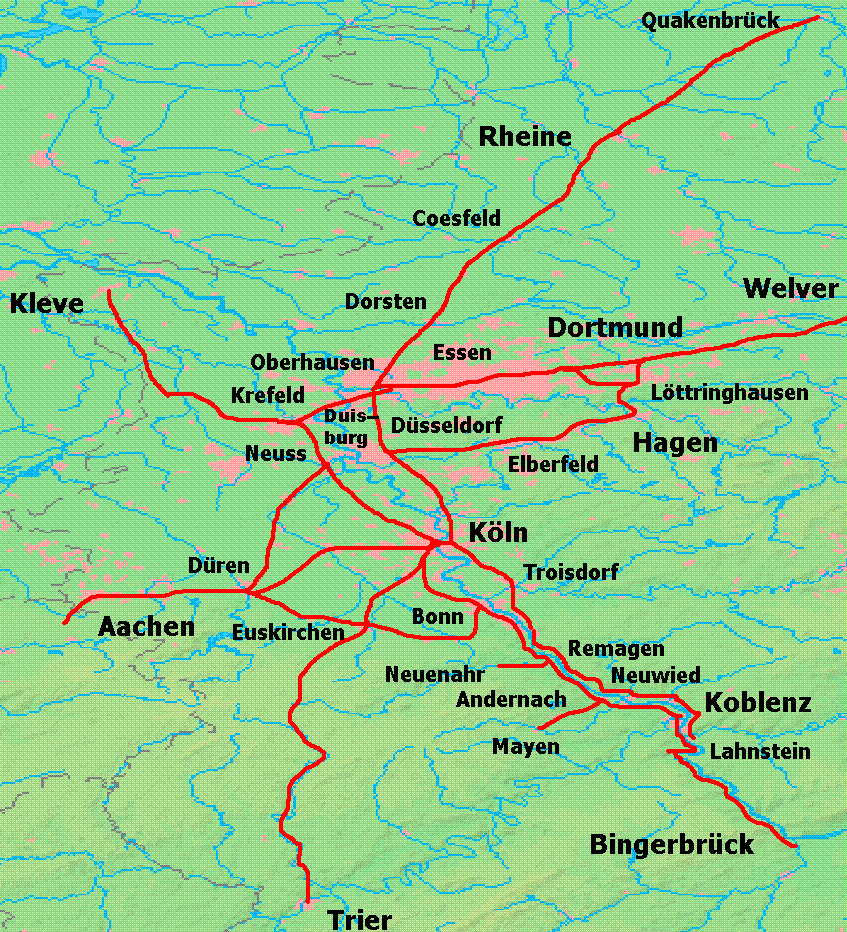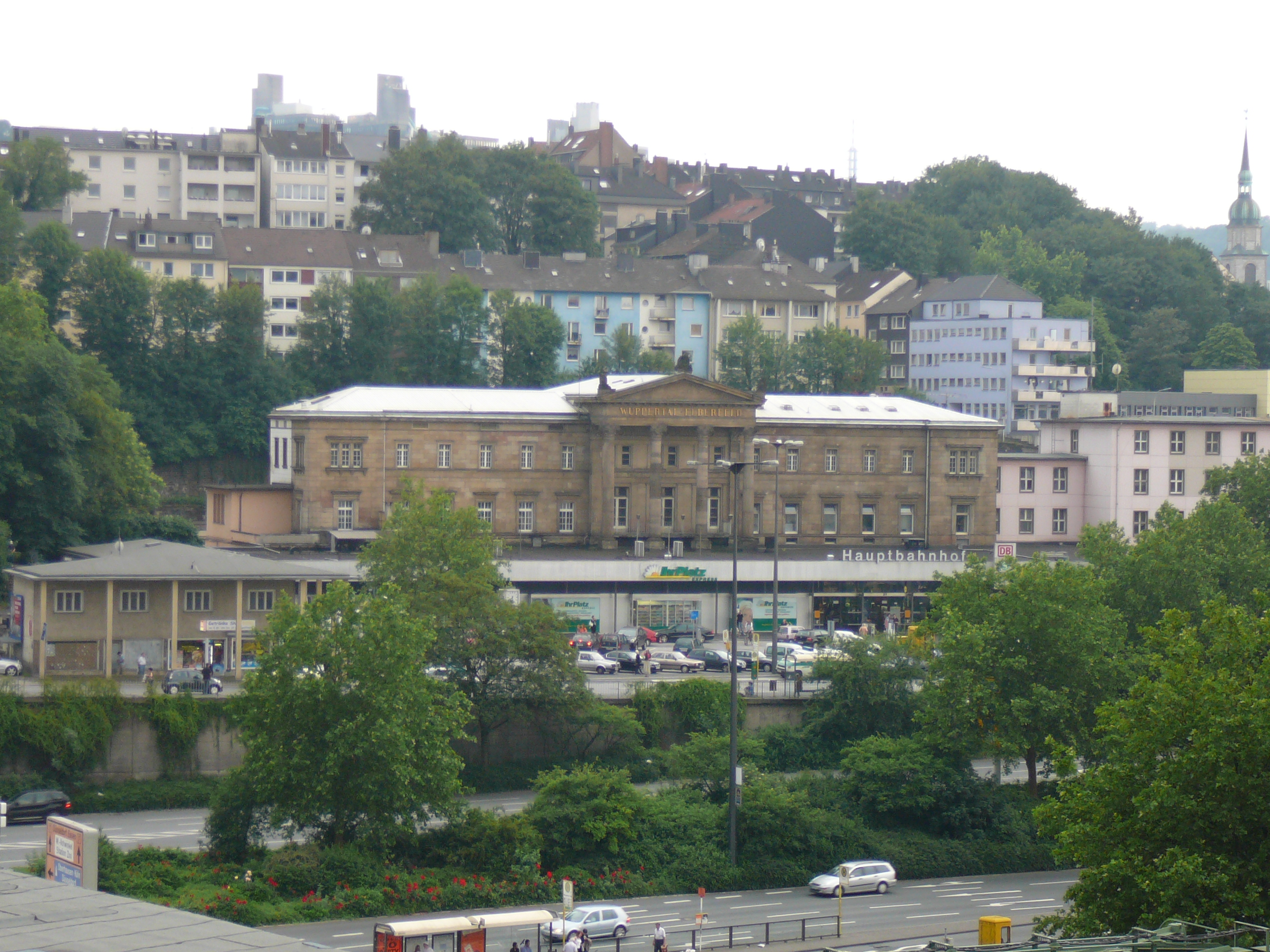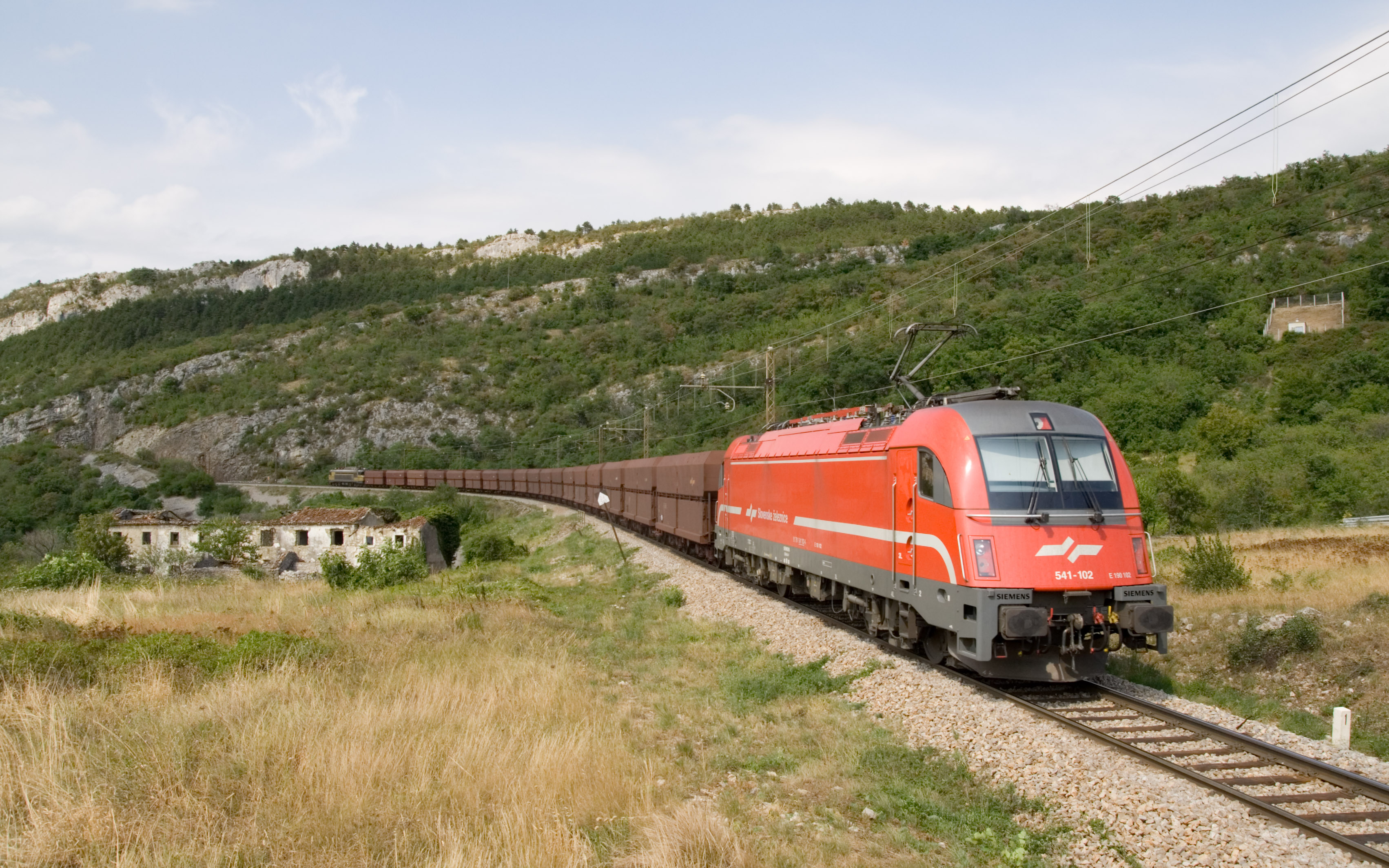|
Düsseldorf–Elberfeld Railway
The Düsseldorf–Elberfeld railway is a 27 km long main line railway in Rail transport in Germany, Germany, originally built by the Düsseldorf-Elberfeld Railway Company, connecting Düsseldorf Hauptbahnhof, Düsseldorf and Elberfeld (now Wuppertal Hauptbahnhof, Wuppertal) via Erkrath station, Erkrath, Hochdahl station, Hochdahl and Wuppertal-Vohwinkel station, Vohwinkel. It is served by Regional-Express, Regional Express, Regionalbahn and Rhine-Ruhr S-Bahn, S-Bahn trains. History The Düsseldorf–Elberfeld railway was built from 1838 to 1841 by the ''Düsseldorf-Elberfeld Railway Company'' (''Düsseldorf-Elberfelder Eisenbahn-Gesellschaft'', DEE), which had been established for this purpose. It was taken over by the Bergisch-Märkische Railway Company (''Bergisch-Märkische Eisenbahn-Gesellschaft'', BME) in 1857 and a continuous second track was built by 1865. Realignment of lines in Düsseldorf The Düsseldorf Hauptbahnhof, Düsseldorf Central Station opened on 1 ... [...More Info...] [...Related Items...] OR: [Wikipedia] [Google] [Baidu] |
North Rhine-Westphalia
North Rhine-Westphalia (german: Nordrhein-Westfalen, ; li, Noordrien-Wesfale ; nds, Noordrhien-Westfalen; ksh, Noodrhing-Wäßßfaale), commonly shortened to NRW (), is a States of Germany, state (''Land'') in Western Germany. With more than 18 million inhabitants, it is the List of German states by population, most populous state of Germany. Apart from the city-states, it is also the List of German states by population density, most densely populated state in Germany. Covering an area of , it is the List of German states by area, fourth-largest German state by size. North Rhine-Westphalia features 30 of the 81 German municipalities with over 100,000 inhabitants, including Cologne (over 1 million), the state capital Düsseldorf, Dortmund and Essen (all about 600,000 inhabitants) and other cities predominantly located in the Rhine-Ruhr metropolitan area, the largest urban area in Germany and the fourth-largest on the European continent. The location of the Rhine-Ruhr at the h ... [...More Info...] [...Related Items...] OR: [Wikipedia] [Google] [Baidu] |
Rhenish Railway Company
The Rhenish Railway Company (German language, German: ''Rheinische Eisenbahn-Gesellschaft'', RhE) was along with the Cologne-Minden Railway Company (CME) and the Bergisch-Märkische Railway Company (BME) one of the railway companies that in the mid-19th century built the first railways in the Ruhr and large parts of today's North Rhine-Westphalia. Foundation The industrialists of the Rhineland and the Bergisches Land, then part of Prussia, sought to avoid paying the high tolls for using the Rhine imposed by the Netherlands and very early in its development, saw the possibility of the new means of transport, the railway. As early as the 1830s committees were established the cities of the Rhineland to promote proposals for building railways. Some of the members of the Cologne committee under David Hansemann (1790–1864)—a merchant and banker from Aachen—and the Aachen Committee favoured a railway line through Belgium to the seaport of Antwerp via Liege. Belgium, which had bee ... [...More Info...] [...Related Items...] OR: [Wikipedia] [Google] [Baidu] |
Buildings And Structures In Wuppertal
A building, or edifice, is an enclosed structure with a roof and walls standing more or less permanently in one place, such as a house or factory (although there's also portable buildings). Buildings come in a variety of sizes, shapes, and functions, and have been adapted throughout history for a wide number of factors, from building materials available, to weather conditions, land prices, ground conditions, specific uses, prestige, and aesthetic reasons. To better understand the term ''building'' compare the list of nonbuilding structures. Buildings serve several societal needs – primarily as shelter from weather, security, living space, privacy, to store belongings, and to comfortably live and work. A building as a shelter represents a physical division of the human habitat (a place of comfort and safety) and the ''outside'' (a place that at times may be harsh and harmful). Ever since the first cave paintings, buildings have also become objects or canvasses of much artis ... [...More Info...] [...Related Items...] OR: [Wikipedia] [Google] [Baidu] |
1838 Establishments In Prussia
Events January–March * January 10 – A fire destroys Lloyd's Coffee House and the Royal Exchange in London. * January 11 – At Morristown, New Jersey, Samuel Morse, Alfred Vail and Leonard Gale give the first public demonstration of Morse's new invention, the telegraph. * January 11 - A 7.5 earthquake strikes the Romanian district of Vrancea causing damage in Moldavia and Wallachia, killing 73 people. * January 21 – The first known report about the lowest temperature on Earth is made, indicating in Yakutsk. * February 6 – Boer explorer Piet Retief and 60 of his men are massacred by King Dingane kaSenzangakhona of the Zulu people, after Retief accepts an invitation to celebrate the signing of a treaty, and his men willingly disarm as a show of good faith. * February 17 – Weenen massacre: Zulu impis massacre about 532 Voortrekkers, Khoikhoi and Basuto around the site of Weenen in South Africa. * February 24 – U.S. Representatives William J. Graves of Kentu ... [...More Info...] [...Related Items...] OR: [Wikipedia] [Google] [Baidu] |
Railway Lines Opened In 1838
Rail transport (also known as train transport) is a means of transport that transfers passengers and goods on wheeled vehicles running on rails, which are incorporated in tracks. In contrast to road transport, where the vehicles run on a prepared flat surface, rail vehicles (rolling stock) are directionally guided by the tracks on which they run. Tracks usually consist of steel rails, installed on sleepers (ties) set in ballast, on which the rolling stock, usually fitted with metal wheels, moves. Other variations are also possible, such as "slab track", in which the rails are fastened to a concrete foundation resting on a prepared subsurface. Rolling stock in a rail transport system generally encounters lower frictional resistance than rubber-tyred road vehicles, so passenger and freight cars (carriages and wagons) can be coupled into longer trains. The operation is carried out by a railway company, providing transport between train stations or freight customer facili ... [...More Info...] [...Related Items...] OR: [Wikipedia] [Google] [Baidu] |
Railway Lines In North Rhine-Westphalia
Rail transport (also known as train transport) is a means of transport that transfers passengers and goods on wheeled vehicles running on rails, which are incorporated in tracks. In contrast to road transport, where the vehicles run on a prepared flat surface, rail vehicles (rolling stock) are directionally guided by the tracks on which they run. Tracks usually consist of steel rails, installed on sleepers (ties) set in ballast, on which the rolling stock, usually fitted with metal wheels, moves. Other variations are also possible, such as "slab track", in which the rails are fastened to a concrete foundation resting on a prepared subsurface. Rolling stock in a rail transport system generally encounters lower frictional resistance than rubber-tyred road vehicles, so passenger and freight cars (carriages and wagons) can be coupled into longer trains. The operation is carried out by a railway company, providing transport between train stations or freight customer facilit ... [...More Info...] [...Related Items...] OR: [Wikipedia] [Google] [Baidu] |
S8 (Rhine-Ruhr S-Bahn)
Line S 8 is an S-Bahn line operated by DB Regio on the Rhine-Ruhr network. It runs from Hagen Hauptbahnhof in the west to Mönchengladbach Hauptbahnhof in the east via Wuppertal Hauptbahnhof, Düsseldorf Hauptbahnhof and Neuss Hauptbahnhof. It is operated between Düsseldorf and Wuppertal-Oberbarmen station at 20-minute intervals using class 422 electric multiple units. One out of three trains continues to Hagen, running hourly. An S 9 service and three Regional-Express services (Wupper-Express, Rhein-Münsterland-Express and Maas-Wupper-Express) also operate between Wuppertal-Vohwinkel and Hagen each hour. Line S 8 runs over lines built by various railway companies: *from Mönchengladbach to Neuss on the Mönchengladbach–Düsseldorf railway, opened by the Aachen-Düsseldorf-Ruhrort Railway Company between 1852 and 1854 *from Neuss to near Düsseldorf-Hamm over the new line built with the Hamm Railway Bridge opened by the Bergisch-Märkische Railway Company on 24 July 1870, *fr ... [...More Info...] [...Related Items...] OR: [Wikipedia] [Google] [Baidu] |
Maas-Wupper-Express
The Maas-Wupper-Express (RE 13) is a Regional-Express service in the German state of North Rhine-Westphalia (NRW), running from the Dutch border town of Venlo to Hamm in Westphalia. Route Together with the Wupper-Express (RE 4) and Rhine-Ruhr S-Bahn line S 8, the Maas-Wupper-Express provides an east-west link between the lower Rhine of Germany and the eastern Ruhr. It runs on the tracks of the Venlo–Viersen, Viersen-Mönchengladbach, Mönchengladbach–Düsseldorf, Düsseldorf–Wuppertal, Wuppertal–Hagen and Hagen–Hamm lines. Trains running between Venlo and Hamm have to reverse in Mönchengladbach Hauptbahnhof, so the Maas-Wupper-Express is scheduled to spend nine minutes there on the way to Venlo and ten minutes towards Hamm. In 2026 the current route will be extend towards the central station of the Dutch city Eindhoven, also stopping at Helmond, in a joint exploitation with Arriva Netherlands Operations The operator of the line is Eurobahn, a subsidiary of ... [...More Info...] [...Related Items...] OR: [Wikipedia] [Google] [Baidu] |
Wupper-Express
The Wupper-Express (RE 4) is a Regional-Express service in the German state of North Rhine-Westphalia (NRW) running from Aachen via Mönchengladbach, Düsseldorf, Wuppertal, Hagen to Dortmund. The service is operated every hour by DB Regio NRW. It is the third most widely used Regional-Express line in the area administered by the Verkehrsverbund Rhein-Ruhr with approximately 24,000 passengers a day. The line is part of the Rhine-Ruhr Express (RRX) network an is operated by National Express. History Today's RE 4 is the successor to the former ''StädteExpress'' line SE from Aachen to Hagen and Iserlohn. Later, the end point was moved to Hamm and after the abolition of InterRegio services it was extended to Munster. Under the second stage of North Rhine-Westphalia's integrated timetable (ITF 2), introduced in December 2002, it was replaced by the Maas-Wupper-Express (RE 13) and the Ems-Börde-Bahn (RB 89) services between Hagen and Munster and the Wupper-Express has since then ... [...More Info...] [...Related Items...] OR: [Wikipedia] [Google] [Baidu] |
Düsseldorf-Gerresheim Station
Düsseldorf-Gerresheim station is a through station in the district of Gerresheim in the city of Düsseldorf in the German state of North Rhine-Westphalia. The station was opened along with the Düsseldorf–Elberfeld railway from Düsseldorf to Erkrath by the Düsseldorf-Elberfeld Railway Company on 20 December 1838. It has two platform tracks and it is classified by Deutsche Bahn as a category 5 station. Its station building, which has been refurbished as ''Kulturbahnhof'' (culture station) is the oldest extant station building in Germany. The station is served by Rhine-Ruhr S-Bahn lines S 8 between Mönchengladbach and Wuppertal-Oberbarmen or Hagen every 20 minutes, S 28 between Mettmann Stadtwald or Wuppertal Hauptbahnhof and Kaarster See every 20 and several S 68 services between Wuppertal-Vohwinkel and Langenfeld in the peak hour. It is also served by Stadtbahn line U73 (every 10 minutes) and four bus routes: 730 (10), 736 (20), 736 (20/40) and 737 (20), all operate ... [...More Info...] [...Related Items...] OR: [Wikipedia] [Google] [Baidu] |
Bank Engine
A bank engine (United Kingdom/Australia) (colloquially a banker), banking engine, helper engine or pusher engine (North America) is a railway locomotive that temporarily assists a train that requires additional power or traction to climb a gradient (or ''bank''). Helpers/bankers are most commonly found in mountain divisions (called "helper districts" in the United States), where the ruling grade may demand the use of substantially greater motive power than that required for other grades within the division. Historic practice Helpers/bankers were most widely used during the age of steam, especially in the American West, where significant grades are common and trains are long. The development of advanced braking systems and diesel-electric or electric locomotives has eliminated the everyday need for bankers/helpers in all but a few locations. With the advent of dynamic brakes on electric or diesel-electric locomotives, helpers/bankers can also be used to provide more braking fo ... [...More Info...] [...Related Items...] OR: [Wikipedia] [Google] [Baidu] |

.jpg)






